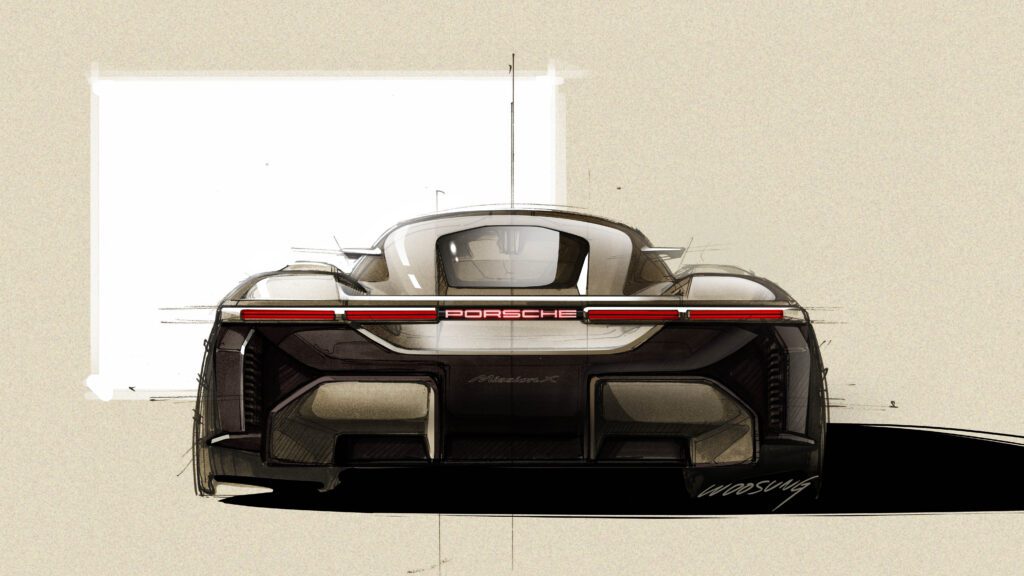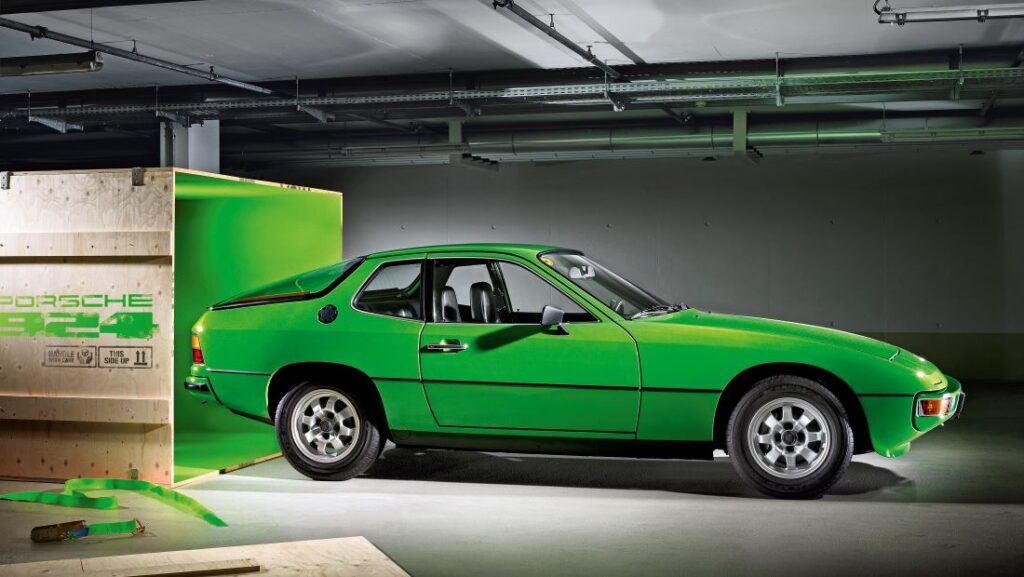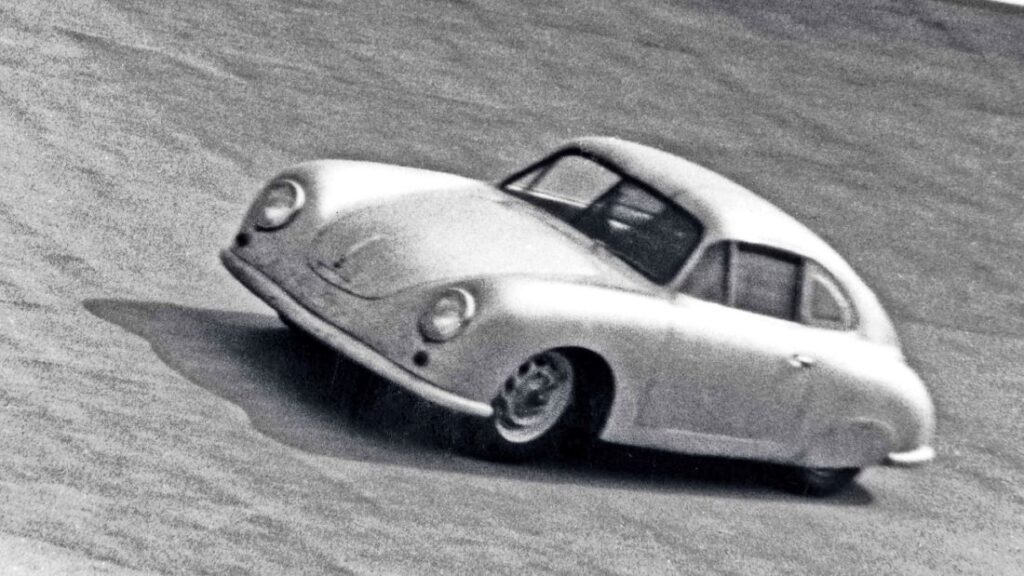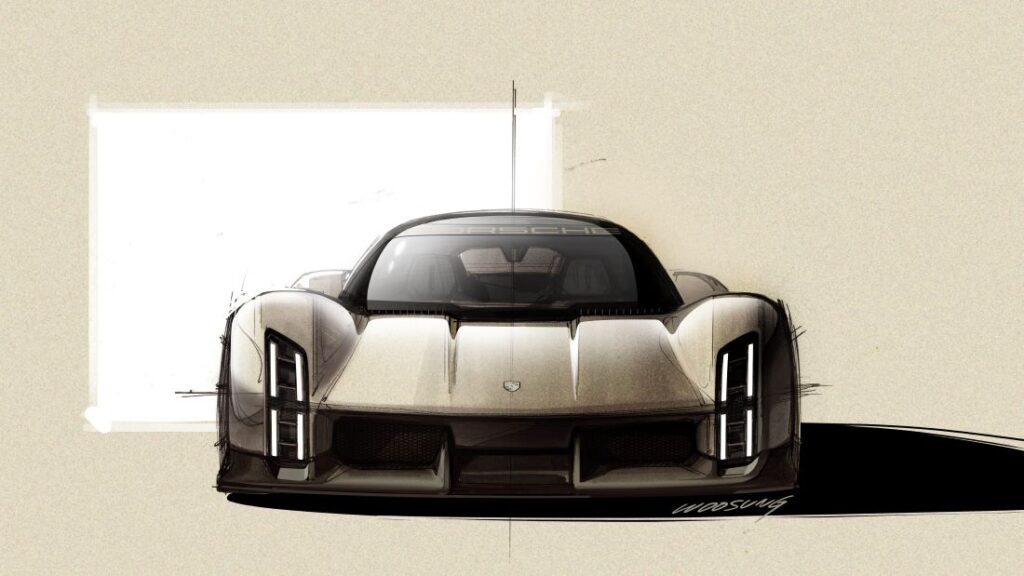This website uses cookies so that we can provide you with the best user experience possible. Cookie information is stored in your browser and performs functions such as recognising you when you return to our website and helping our team to understand which sections of the website you find most interesting and useful.
In pursuit of perfection with Porsche
By Rory FH Smith | 15 November 2023 | Cars & Yachts, Motoring, Speed
As Porsche celebrates 75 years in pursuit of sportscar perfection, we take a look back through the ages of this unstoppable sportscar company

For a very select group of people, the best just isn’t good enough. In 1933 Ernest Hives, head of Rolls-Royce Aero Engine division, saw the importance of a game-changing jet engine with the production of the Merlin; as far as tech pioneer Steve Jobs was concerned, the most powerful computers of the 1970s were too big and too hard to use. Similarly, Ferry Porsche didn’t think much of the sportscar offering back in the late 1940s. It was that conviction that drove him to develop his dream 75 years ago, giving birth to a marque that would become synonymous with the finest sportscars in the world: Porsche.
“In the beginning, I looked around and could not find quite the car I dreamed of, so I decided to build it myself,” said Ferry, commenting on a decision that would eventually see his name attached to some of the most successful sportscars in history. Then aged 37, Ferry was no stranger to the motoring world. Having worked in the engineering department of his father – Ferdinand Porsche’s – company since 1931, Ferry had focused on creating the Type 360 Grand Prix race car for Italian marque Cisitalia but the dream of building his own take on a sportscar was inescapable.
While most people were thinking of producing practical cars in line with the post-war mentality, Ferry thought differently. Together with his team, he shaped a small, sleek aluminium roadster body with rounded headlights and a split windscreen – a car that would be certified for road use in 1948 as the Porsche 356/1 Roadster and produced in Gmünd, Austria. Powered by a plucky 1.1-litre air-cooled flat-four engine from Volkswagen, the 356/1 had 35hp and weighed just 585 kilograms. Finished in silver with a red interior, the car could reach speeds of up to 83 mph.
While most would have been satisfied with the end result, Ferry Porsche wasn’t. Still restless, he continued to improve and enhance his creation, gradually improving the design rather than reinventing it – a philosophy that would go on to define the brand for the next 75 years.

Just three years on from the 356’s creation, Ferry’s father and founder of Porsche died at the age of 75, the same year that the company achieved a class victory at the gruelling 24 Hours of Le Mans with a modified version of the 356. Despite the mixed emotions, Porsche’s first motorsport victory cemented Ferry’s creation as a thoroughbred sports car and kickstarted Porsche’s hugely successful string of motorsport victories over the following decades.
By the early 1960s, Porsche had proven itself as a leader in sports and performance cars with the 356 but a successor was needed. In September 1963, Porsche pulled the covers off its latest offering– the 901, designed by Ferry’s son, Ferdinand. As the car that would replace his father’s initial dream car, the 901 had a similar rounded silhouette but with more pronounced headlamps and an extra pair of seats. Just 84 901s were produced before Porsche was forced to change its name after Peugeot claimed it owned the rights to a three-digit number where the middle number was zero. A petty move from the French carmaker, perhaps but gave way to one of the most legendary three-digit designations in the world of sportscars: the 911.
DRIVING FORCE
In the long and accomplished history of car design, few cars – if any – can match up to the 911’s instantly recognisable shape. The design has remained largely the same for six decades, with the rounded silhouette, rear-mounted flat-six engine, pronounced headlamps and four-seat set-up still present and correct. With the 911 seeing out the 1960s, the following decades would see Porsche go on to dominate the racing scene. Cars like the legendary 917 claimed the marque’s first overall win at Le Mans in 1970, while the engine Porsche developed in Formula One powered Niki Lauda to victory as World Champion in 1984. That same year, Porsche scooped the Paris-Dakar Rally win in an all-wheel drive version of the 911. The sportscar maker was seemed unstoppable.
Alongside the many motorsport victories and podiums came a string of new sportscars to complement the 911, such as the front-engined 924, the V8-engined 928 that was ushered in to (unsuccessfully) replace the 911 and the boxy yet beautiful 944 in the early 1980s. Continuing to experiment in the 1990s, Porsche showcased the more affordable Boxster in 1993 ahead of Ferry Porsche’s passing in 1998 at the age of 88. Despite the death of its visionary father, the marque continued to test the water and came out with the controversial Cayenne SUV in 2002.

While SUVs are a staple of the automotive landscape today, Porsche took a risk in the early 2000s and in doing so, established its efforts in the performance SUV market well ahead of its competitors. Dialling up its sportscar credentials at the same time, the halo product Carrera GT arrived in 2003 following in the 959’s tyre tracks and sparking a succession of high-powered hypercars that would sit above the 911. In 2013, the hybrid-powered 918 followed in the Carrera GT’s footsteps and just two years later, Porsche announced it was going electric with what would become the Taycan sports saloon in 2019. Carving out a path for Porsche to eventually electrify more of its range alongside the classic combustion-engined cars, the Taycan proved an all-electric future was something to get excited about.
Despite fielding a wide range of different shapes, sized and powered cars, Porsche remains steadfast in its mission to produce sportscars. Still flying the flag for the marque is its definitive sportscar, the 911. Despite the formula for it dating back to the early 1960s, the 911 is still as practical and performance-orientated as ever. Driving the latest 911 Carrera 4 GTS over 500 miles, laden with as much luggage as the front trunk will allow is effortless, even with a couple of children occupying the rear seats for the duration. From lugging loads and cruising on the motorway to blasting along a twisty b-road by yourself, Porsche’s tried and tested formula for a sportscar remains unrivalled.
What started as one man’s dream – his desire to create something better – sparked a sportscar company like no other. One capable of producing everything from performance SUVs to thoroughbred racers and all-electric hypercars. Had Ferry Porsche not acted on his dream 75 years ago, the world of sportscars would be a very different place. Vocal in its plans to keep building its combustion-powered 911s for “as long as possible” alongside a largely electrified model range, Porsche looks set to keep the dream of practical sportscars with a penchant for performance alive for a while yet.








